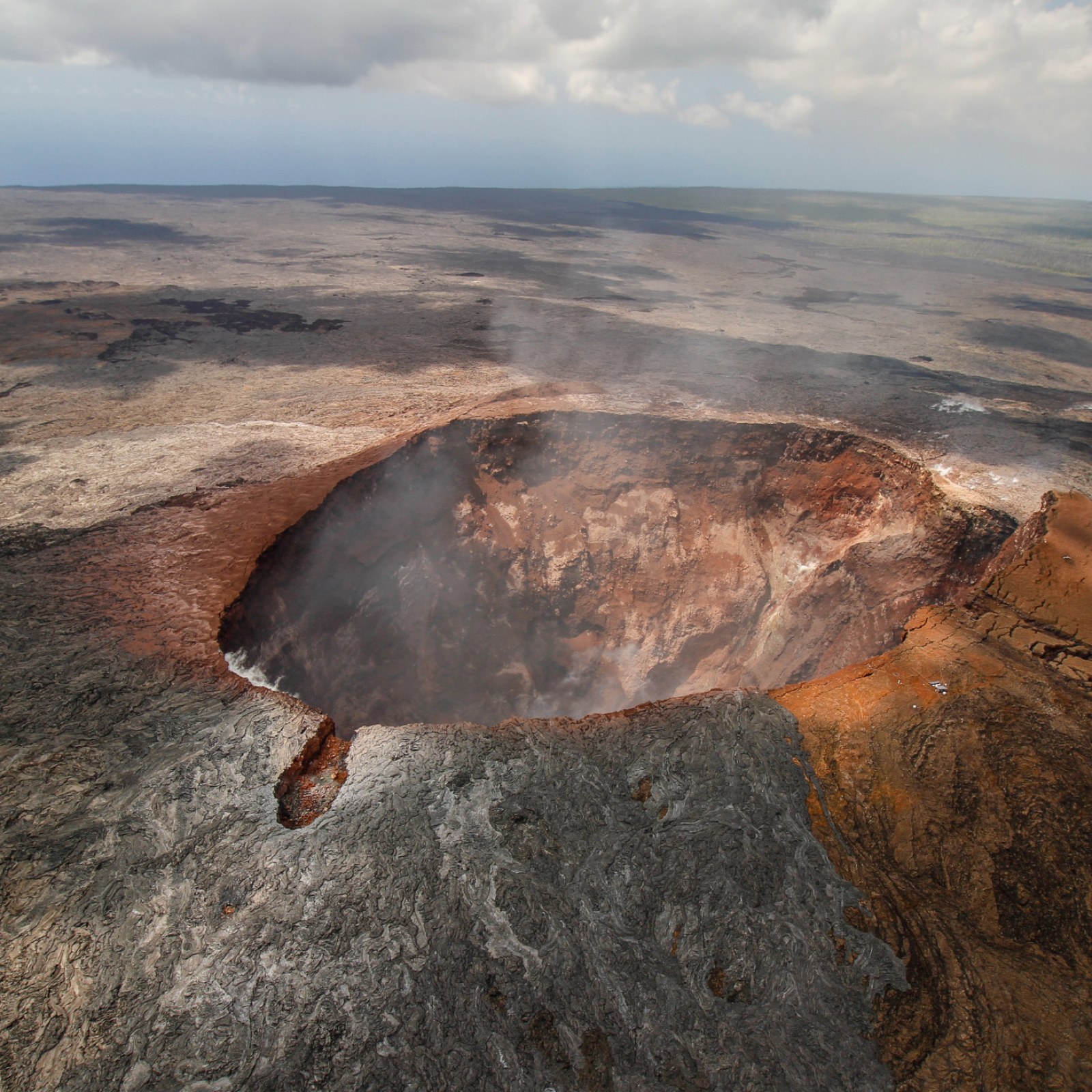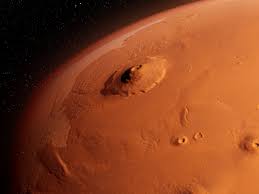Top 10 Largest Volcanoes In The World 2025
By ICON TEAM | Published on Jun 22, 2025
List Of Top 10 Largest Volcanoes In The World 2025:
One of nature's most breathtaking geological formations, volcanoes display the untamed strength and dynamic processes of the Earth's interior—and, in some cases, beyond. For thousands of years, giants like towering stratovolcanoes and expansive shield volcanoes have molded landscapes, impacted climates, and captivated people's attention. Based on their size, impact, and geological significance, the top 10 largest volcanoes in the globe as of 2025 are examined in detail below.
1. Mauna Loa (Hawaii, USA):

Type: Shield Volcano
Location: Big Island, Hawaii
Height: 4,169 meters (13,678 feet) above sea level
Volume: Approximately 80,000 cubic kilometers Hawaii's Big Island is dominated by Mauna Loa, the planet's largest active volcano by volume. This enormous shield volcano is approximately 120 kilometers (75 miles) long and 5,271 square kilometers (2,035 square miles) in size. When measured from its underwater base, it is taller than Mount Everest, rising from the ocean floor to a total height of over 9,000 meters (29,500 feet) from base to summit.
Fluid basaltic lava flows that spread extensively are the cause of Mauna Loa's gentle slopes, which are typical of shield volcanoes. Since 1843, it has erupted 33 times, most recently in 2022, alerting everyone that it is still active. Because of its enormous size and regular eruptions, the volcano is an important topic for volcanologists to research. Its worldwide significance is increased by its cultural significance to native Hawaiians, who view it as a sacred spot.
2. Tamu Massif (Pacific Ocean):

Type: Shield Volcano (Submarine)
Location: Shatsky Rise, Northwest Pacific Ocean
Height: Approximately 4,460 meters (14,620 feet) above the ocean floor
Volume: Estimated 2.5 million cubic kilometers
With an area of around 310,000 square kilometers (120,000 square miles), or the size of New Mexico, Tamu Massif, which is 1,600 kilometers (1,000 miles) east of Japan, is the largest volcano on Earth by area. This underwater shield volcano was found in 2013. It is a component of the Shatsky Rise, a huge oceanic plateau that was built during the Late Jurassic to Early Cretaceous period approximately 145 million years ago.
The low-profile, dome-like form of Tamu Massif is the consequence of sluggish, fluid lava flows, in contrast to typical volcanoes with steep cones. There is still some disagreement about whether it is a single volcano or a network of several eruptive centers, and its immense scale complicates our understanding of volcanic activity. Tamu Massif, a geological wonder that provides insights into Earth's old volcanic processes, has been dormant for millions of years.
3. Mount Kilimanjaro (Tanzania):

Type: Stratovolcano
Location: Kilimanjaro Region, Tanzania
Height: 5,895 meters (19,341 feet)
Volume: Approximately 4,800 cubic kilometers
The highest peak in Africa, Mount Kilimanjaro, is a dormant stratovolcano made up of the volcanic cones Kibo, Mawenzi, and Shira. Despite having lain dormant for more than 360,000 years, Kibo, the tallest cone at 5,895 meters, is the most noticeable and the only one with the potential for future activity. Kilimanjaro is one of the most recognizable natural icons in the world because of its enormous size and remote prominence.
Every year, thousands of climbers are drawn to its varied environments, which include glaciers, alpine deserts, and rainforests. Kilimanjaro continues to be a symbol of geological significance and natural beauty despite the fact that its glaciers are receding as a result of climate change. Even though its last major eruption was between 150,000 and 200,000 years ago, geothermal activity indicates that it may still exist.
4. Mount Fuji (Japan):

Type: Stratovolcano
Location: Honshu, Japan
Height: 3,776 meters (12,389 feet)
Volume: Approximately 1,400 cubic kilometers
A cultural icon and the highest mountain in Japan, Mount Fuji is an active stratovolcano distinguished by its nearly perfect conical shape. Situated 62 miles (100 kilometers) southwest of Tokyo, it is a UNESCO World Heritage Site and is often portrayed in literature and art as a representation of Japanese identity.
The last time Fuji erupted was during the Hoei in 1707, which caused ash to fall over Edo (present-day Tokyo). Its closeness to heavily populated areas raises concerns about the possibility of future eruptions. Because of its size, symmetrical beauty, and geological activity, Fuji is one of the biggest volcanoes in the world. With more than 200,000 climbers each year, the volcano is a well-liked hiking and tourist destination due to its accessibility.
5. Mount Etna (Italy):
Type: Stratovolcano
Location: Sicily, Italy
Height: 3,357 meters (11,013 feet)
Volume: Approximately 500 cubic kilometers
Overlooking the eastern coast of Sicily is Mount Etna, one of the most active volcanoes in Europe. Its periodic eruptions, which frequently result in breathtaking ash clouds and lava fountains, have influenced the local economy and landscape. Etna is an essential component of Sicilian culture because of its rich volcanic soils, which sustain agriculture, including olive orchards and vineyards.
Etna's position at the meeting point of the African and Eurasian tectonic plates is what drives its activity. It still erupts often in 2025; recent activity was recorded in 2024. Because of its size and almost continual activity, Etna is an important target for volcano monitoring. Scientists, tourists, and photographers are all drawn to the volcano because of its accessibility and regular outbursts.
6. Mount Vesuvius (Italy):
Type: Stratovolcano
Location: Campania, Italy
Height: 1,281 meters (4,203 feet)
Volume: Approximately 100 cubic kilometers
Mount Vesuvius is a relatively minor but historically significant stratovolcano that gained notoriety for burying Pompeii and Herculaneum during its devastating eruption in 79 CE. It is still active and was last erupted in 1944. It is close to Naples. Vesuvius is one of the most dangerous volcanoes in the world since it is so close to a population of more than 3 million people.
Its explosive capability, fueled by viscous magma capable of producing destructive pyroclastic flows, belies its tiny stature. Vesuvius is continuously observed, and information from past eruptions is crucial for comprehending the risks posed by volcanoes. Hikers trek to the volcano's crater to see its steamy vents and expansive vistas, making it a popular tourist destination.
7. Mount Rainier (USA):
Type: Stratovolcano
Location: Washington, USA
Height: 4,392 meters (14,411 feet)
Volume: Approximately 130 cubic kilometersThe Cascade Range's tallest summit, Mount Rainier, is an active stratovolcano known for its breathtaking scenery and enormous glaciers. It is 95 kilometers (59 miles) southeast of Seattle and presents a serious risk to neighboring populations from lahars (mudflows) and volcanic eruptions. Although its last known eruption took place between 1820 and 1854, geothermal activity indicates that it is still active today.
Rainier is one of the most beautiful yet dangerous volcanoes in the United States due to its prominence and thick glacial cover. It is constantly monitored due to its size and the possibility of lahars, which might destroy populous areas. Over 10,000 climbers attempt to reach the peak of the volcano each year, making it a popular destination for mountaineers.
8. Mount Elbrus (Russia):

Type: Stratovolcano
Location: Caucasus Mountains, Russia
Height: 5,642 meters (18,510 feet)
Volume: Approximately 400 cubic kilometers A dormant stratovolcano, Mount Elbrus is the highest point in Europe and the Caucasus Mountains. Geothermal activity and hot springs suggest that this southern Russian volcano, which last erupted in 50 CE, is not entirely extinct. Elbrus is a prominent landmark in the Caucasus region because of its twin summits and vast glaciers.
Although its remote position and severe weather present difficulties, its size and prominence draw climbers and adventurers. Because it is a component of the Caucasus volcanic arc, which was created by tectonic action between the Arabian and Eurasian plates, Elbrus has geological significance. Even though it isn't as active as some of the other volcanoes on this list, its sheer size makes it one of the biggest in the world.
9. Mount Nyiragongo (Democratic Republic of Congo):

Type: Stratovolcano
Location: Virunga Mountains, DRC
Height: 3,470 meters (11,384 feet)
Volume: Approximately 250 cubic kilometers One of the most hazardous volcanoes in the world, Mount Nyiragongo is well-known for its enduring lava lake, which is among the biggest and most active in the world. Fluid lava flows from Nyiragongo, which is in the Virunga National Park next to Goma, DRC, can reach speeds of up to 100 km/h (60 mph), which puts the local population in grave danger.
Parts of Goma were devastated and hundreds of thousands were displaced by its 2002 eruption. Volcanologists are drawn to the volcano because of its steep-sided crater and distinctive lava composition. Nyiragongo is still active in 2025, and the amount of its lava lake varies. Its worldwide importance is highlighted by its accessibility for tourists and study as well as its dangerous character.
10. Olympus Mons (Mars):

Type: Shield Volcano
Location: Tharsis Region, Mars
Height: 22,000 meters (72,000 feet)
Volume: Approximately 3.5 million cubic kilometers
The greatest volcano in the solar system, Olympus Mons, dominates the Martian terrain. Situated on the Tharsis Bulge, this shield volcano rises 22 kilometers (13.6 miles) above the surrounding plains and has a diameter of 624 kilometers (374 miles), or about the size of Arizona. Its enormous crater, which is 80 kilometers (50 miles) wide and has gentle slopes, is the result of lava flows that lasted for millions of years.
Olympus Mons rose to its massive size over billions of years in a geologically stable environment free from plate tectonics. It provides information on Mars' volcanic past even if it is not active at the moment. The extent of extraterrestrial volcanism is demonstrated by Olympus Mons, which has been thoroughly studied by NASA missions such as the Mars Reconnaissance Orbiter.
Comments 0